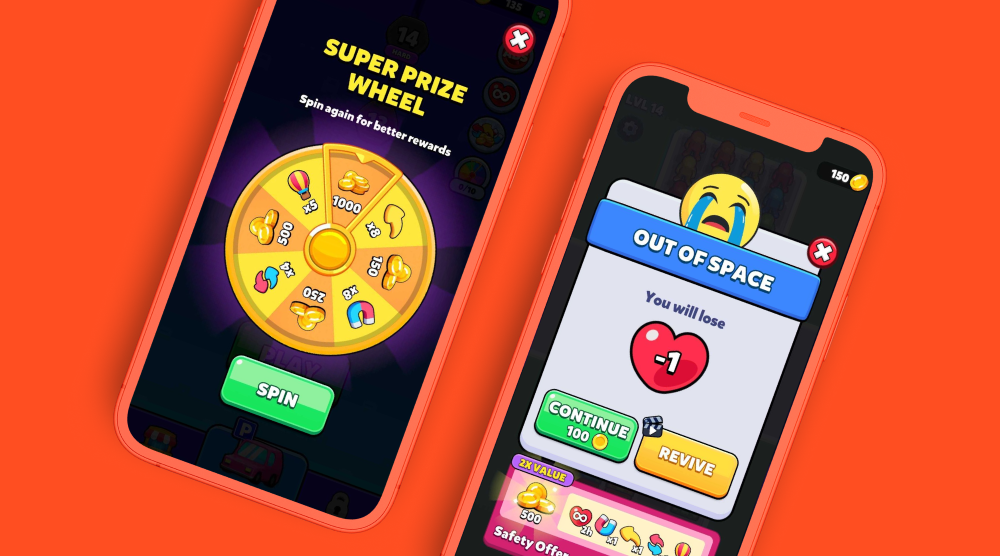This article originally appeared on pocketgamer.biz.
According to data.ai, in May 2021, 11 of the top 15 mobile games were hyper-casual games. By May 2023, this dropped to just two.
Many people in the industry would agree that it's become tougher for mobile games to succeed, and that's driving a renewed focus on extracting as much value from existing games and existing users as possible. Part of that means integrating a wider variety of monetisation tools into games. Hyper-casual games that rely predominantly on interstitials are evolving to a more hybrid monetisation approach that blends elements of casual games with the goal of creating higher lifetime value (LTV).
For any developer who wants to bridge into hybrid-casual games, it’s important to understand why the market changes have happened, learn how to adapt, and discover where to focus your efforts when making the shift.
Market trends
Over the past few years, there’s been an increase in CPI (cost per install) - which increased the cost of UA (user acquisition) - followed by a drop in eCPM (the average revenue for 1,000 ad impressions). This made it much harder to be profitable with the classic ‘high scale, low LTV’ hyper-casual game formula that worked so well in the past.
Hyper-casual games still exist and can be hugely successful, but it’s harder to meet retention benchmarks, and they need higher engagement to reach the same LTV.
What's next?
As always, the market reacts and adapts to changes, and there are innovative ways to deal with the changes. One of those ways is through hybrid-casual games. This genre has four key elements that differentiate it from hyper-casual games:
#1 Simple, marketable core gameplay like hyper-casual games, which allows for high scale and low CPIs
#2 A strong core mechanic that allows for a more profound game experience which can positively affect LTV
#3 A deeper game loop which allows for long-term goals for the game, a solid economy, and a metagame
#4 Shift from interstitials-focused monetisation to rewarded video, which increases revenue and improves retention
Deepening the game loop: The key to hybrid monetisation
The most significant change developers are trying is deepening the game loop to motivate players to engage with a game longer, ultimately exposing them to more in-app purchases (IAP) and in-app advertising (IAA).
A variety of elements need to be well-balanced for a game to be successful. These include:
- Short and long-term goals: Short-term goals, such as winning a level must be combined correctly with long-term goals that are provided by the metagame.
- Strong economy: The game economy and offers must be well balanced, allowing for achievable and attainable challenges.
- Progression in the level design: This is one of the main elements that keeps someone in the game. Players want to feel a sense of progression in every part of the game - from level design to their character’s skills to the meta concept they are building.
- Challenge: It’s important to create challenges or pressure points in the game, as challenges create the right environment to offer premium content that can be unlocked through rewarded video or IAP.
- Meta: The addition of a metagame is crucial as it creates an environment where players can spend their in-game currency.
Creating a balanced monetisation mix
When planning hybrid-casual game design, the ideation, benchmarking, and testing phases stand out as being significantly different from the hyper-casual funnel. As such, they are crucial to crack for a successful rewarded video and IAP monetisation mix.
Ideation
More advanced planning is required to make a deep game loop and create high user motivation. In particular, the monetisation strategy must connect well to other game elements. When planning the monetisation strategy, it’s essential to think ahead of time about the challenge. A player must feel the need to win, be pushed by near-miss moments, and play at the right difficulty level. Getting this right will motivate them to watch a rewarded video or make a purchase. There must also be a meaningful upgrade system where the player feels control over the challenge. When they are clear on the need and impact of the upgrades - such as progressing faster in the game, skipping a level, or whatever the challenge is - they will be more likely to “pay” for it.
The combination of strong core gameplay, challenge and a meaningful upgrade system results in a strong and better overall game economy. When a player deliberates whether to upgrade through IAP, watch a video or keep playing to gain the necessary coins, choosing one of the first two options is only possible if the economy is strong and the connection between the game economy and experience is strong.
All of this is still possible with a classic hyper-casual concept. The difference is how the concept evolves to create a richer game experience.
Benchmarking
For hyper-casual games, CPI, retention and playtime are good profitability markers, as the games rely predominantly on the predictable frequency of interstitials. The same formula, however, does not apply to hybrid-casual games, which utilise rewarded video and IAP as the main monetisation features since they are player initiated and lack the predictability of interstitials. Since high retention and high playtime don’t necessarily correlate to high LTV (but rather high rewarded video and IAP engagement), hybrid-casual games need new benchmarks.
For example, try examining the fail rate. This ideal win-fail ratio will keep players engaged to stay in the game and motivated to take action. To correctly measure this, a rewarded video must be built into the gameplay from D0 (day 0). Players need a reason to watch the rewarded video, and this reason should be clear from D0; otherwise, it will harm the game’s LTV.
Testing
It’s important to understand how effective the selling points are in a game (such as reviving the level, upgrading a skill, or getting a booster) as they indicate whether something in the gameplay needs to be adjusted to improve rewarded video engagement.
Are users engaging with the selling points to the maximum? Are the selling points scalable? Through testing, the results could show that the way the level ends needs to change, or the level is too difficult or easy, or maybe what’s being sold isn’t valuable enough. Testing must be done from D0 because if rewarded video isn’t strong from the start, it will be harder to improve on later in the game’s development.
It’s about balancing the challenge with the option to gain a reward, power-ups, energy, etc. Testing to find this sweet spot is vital to maximise revenue scale from rewarded videos.
If CPI, retention and playtime were good LTV markers for hyper-casual games, for hybrid-casual games, rewarded video engagement rate is an additional fourth metric to pay attention to.
Boost LTV through deeper gameplay
Though it’s still possible to create games with very low CPI, they are more rare. Anyone looking to adjust to this new environment should focus on boosting LTV by creating a deeper game loop. This includes a monetisation strategy that relies less on interstitials and more on rewarded video. It’s crucial to keep the efficiency and methodology of hyper-casual prototyping while focusing on evaluating the core gameplay, and if the initial potential is strong, then executing the hybrid layers.
Let's put these tips to good use
Publish your game with Supersonic



